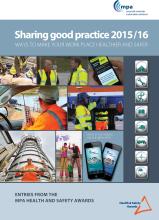The UK Corrosion Prevention Association (CPA), one of the associations that comprise the Structural Concrete Alliance, has released a new guidance document which highlights the most commonly used corrosion testing techniques for reinforced and pre-stressed concrete structures.
Explaining that corrosion is rarely an issue affecting the whole structure uniformly, Technical Note 27: Corrosion Testing of Concrete Structures aims to enable the user to better understand how to assess corrosion risk and make informed decisions about repair strategy based upon a broad base of information.
The guide explains that the initial cause of corrosion is commonly the result of a number of interrelated variables: changes in the concrete permeability, caused by local differences in composition, compaction and curing; construction errors leading to areas with low concrete cover to reinforcement, and variation in the exposure environment, leading to areas with elevated chloride ion content or high carbonation depth.
It states that the aim of comprehensive corrosion testing should be to understand the exposure variability, ascertain risk and develop a repair and maintenance strategy that provides the best technical and commercial solution for the structure.
The document explains that delamination and visual surveys; or global, open grid half-cell potential surveys are the most commonly used methods of ascertaining risk but that these alone cannot determine the corrosion risk over the entire structure.
Noting that testing needs to be properly planned by competent professionals and tailored to the specific needs of each structure, the document states that the findings of the above surveys should be used to select or target representative locations for further testing.
Others tests may include detailed, closer grid half- cell potential surveys; screening for chloride and other contamination; testing for depths of carbonation; corrosion rate monitoring, or concrete resistivity testing.
For each type of testing the guide outlines typical methods, advantages and disadvantages and explains what the obtained results may mean.
The document is available for free download from the Corrosion Prevention Association %$Linker:







